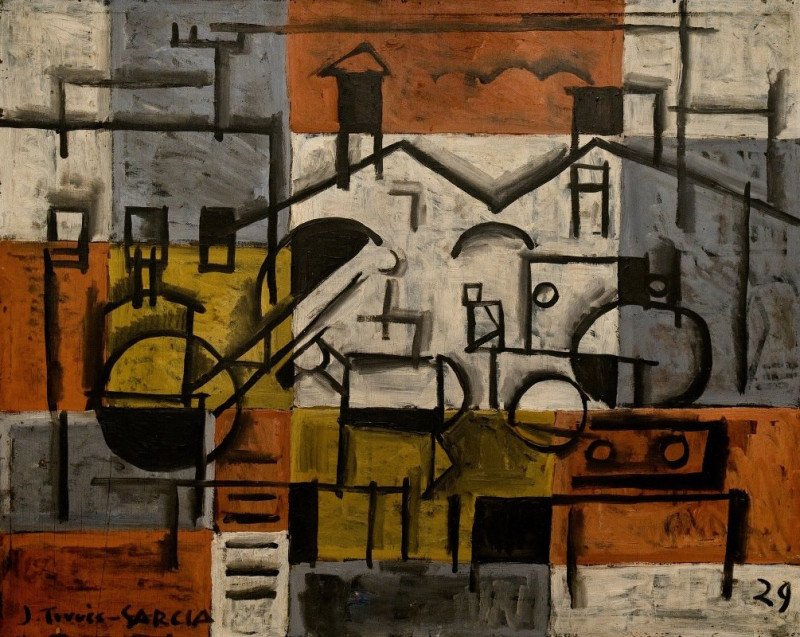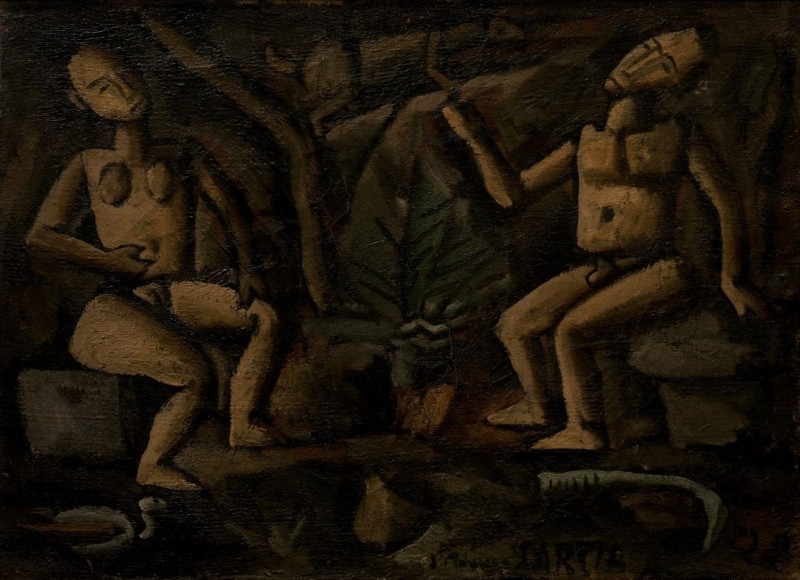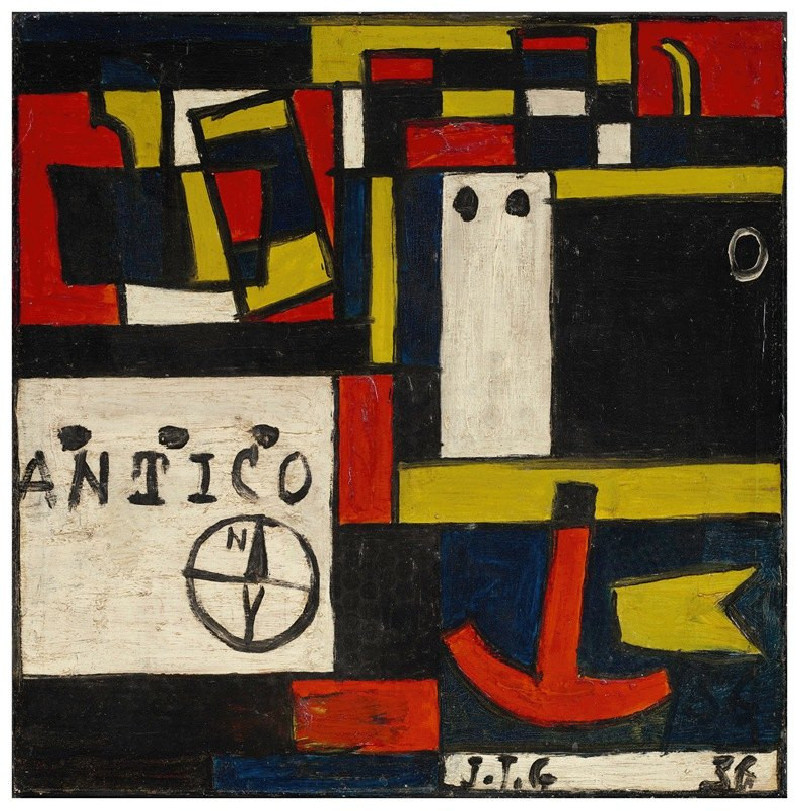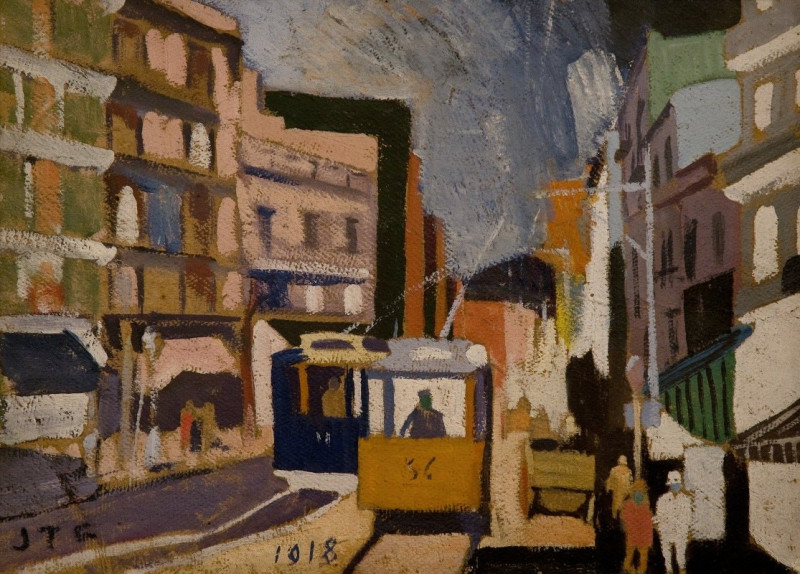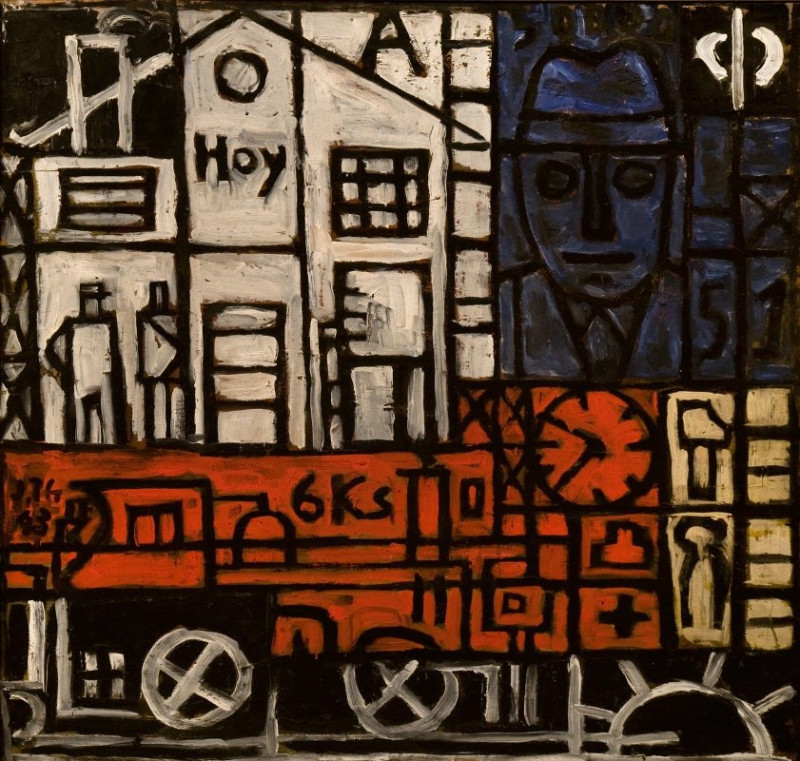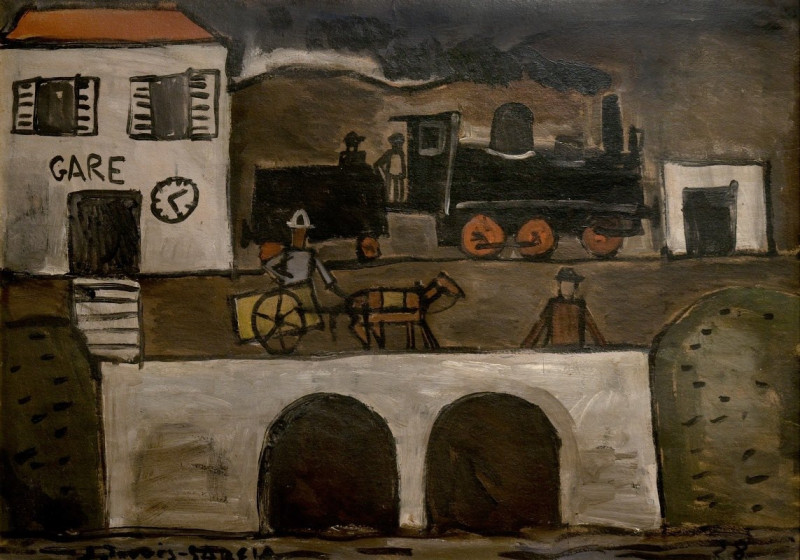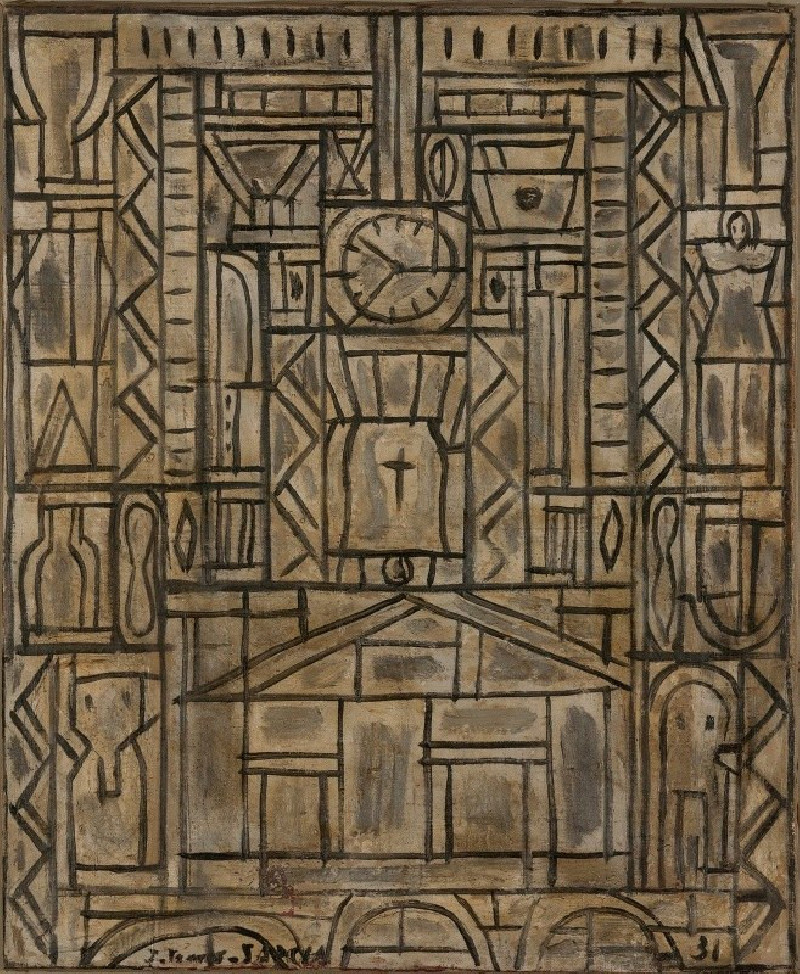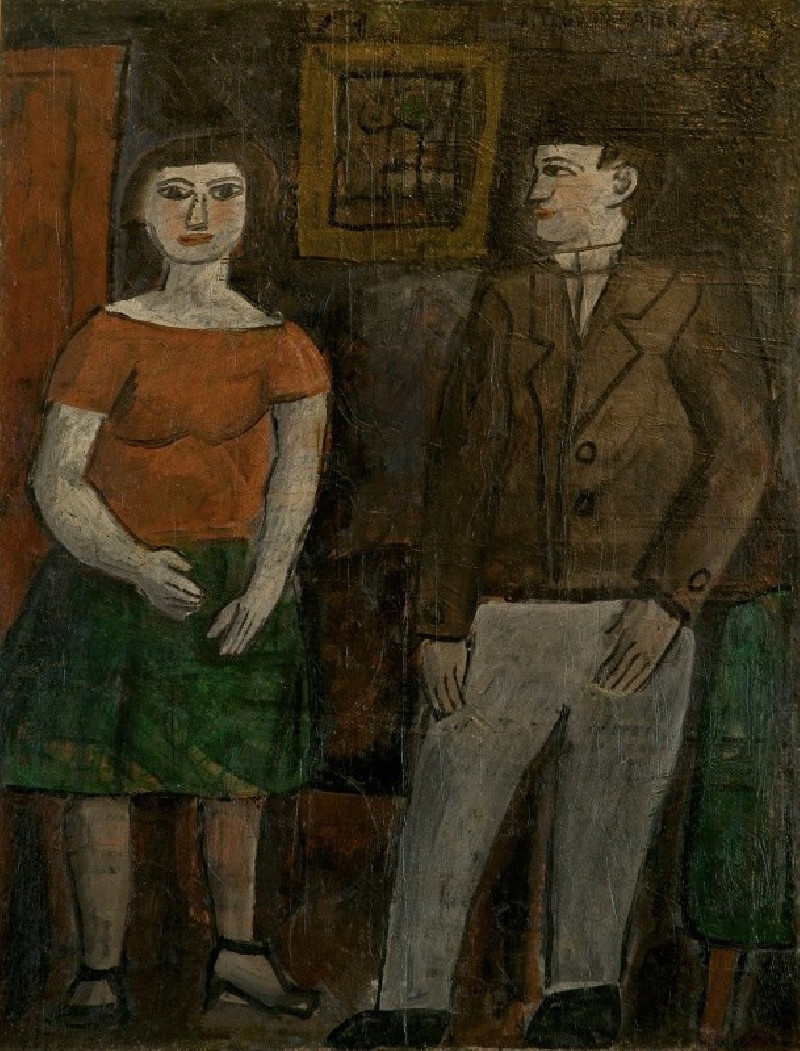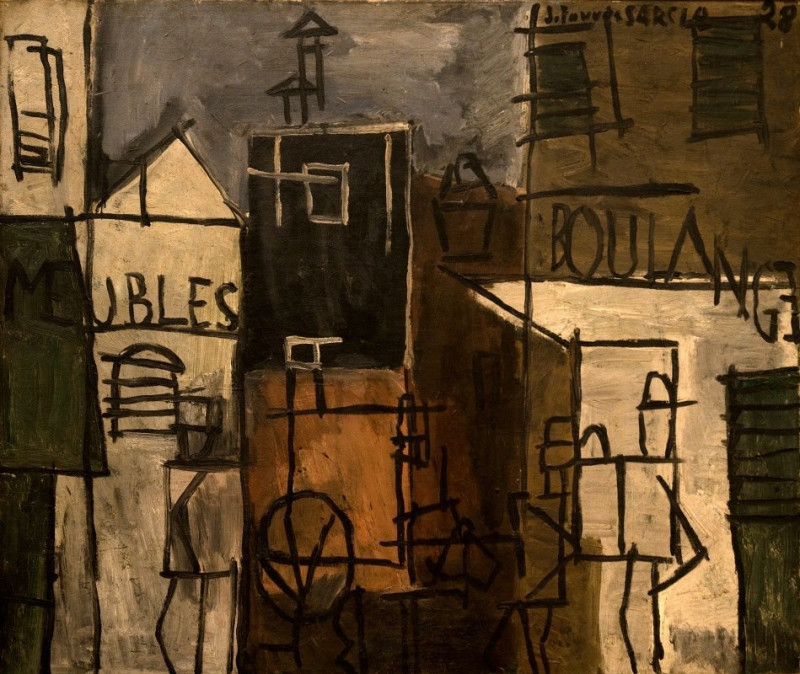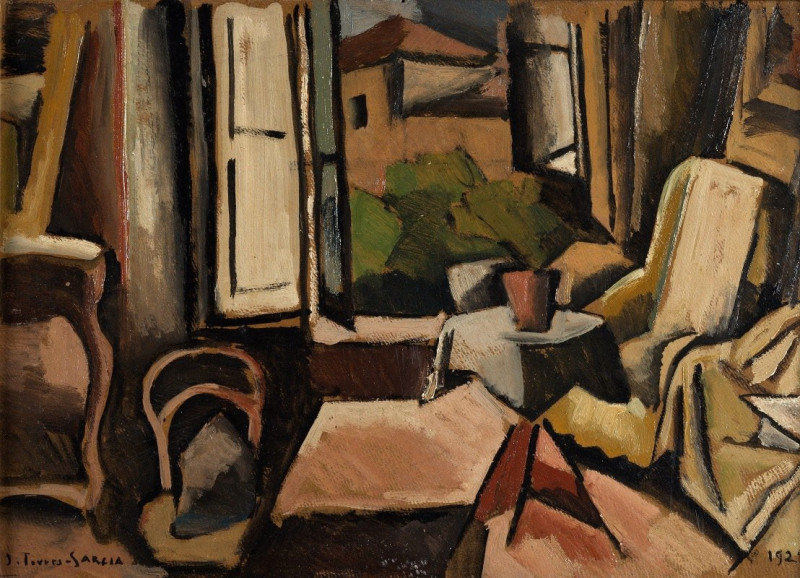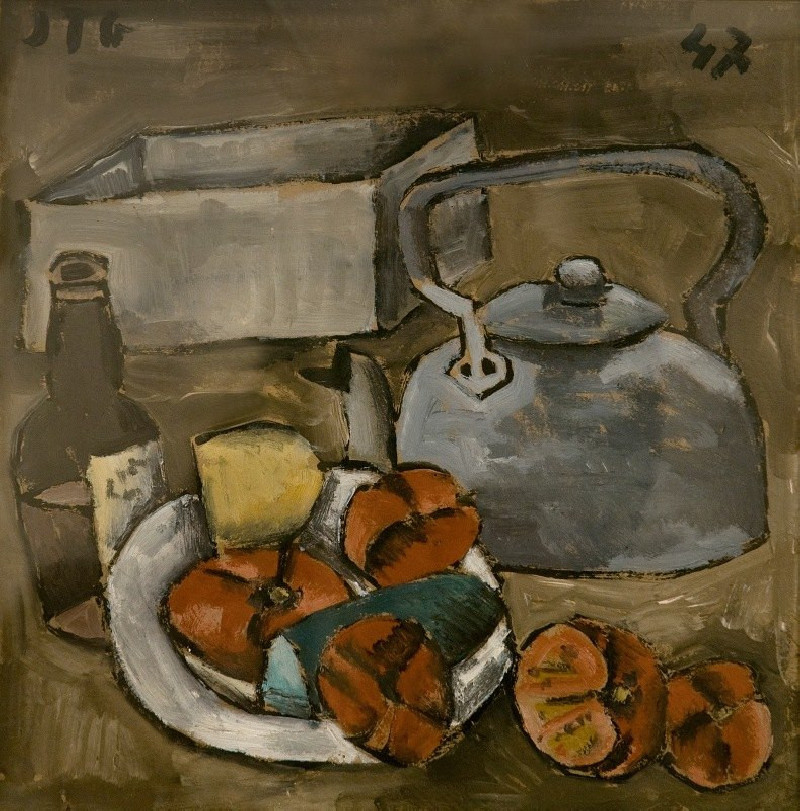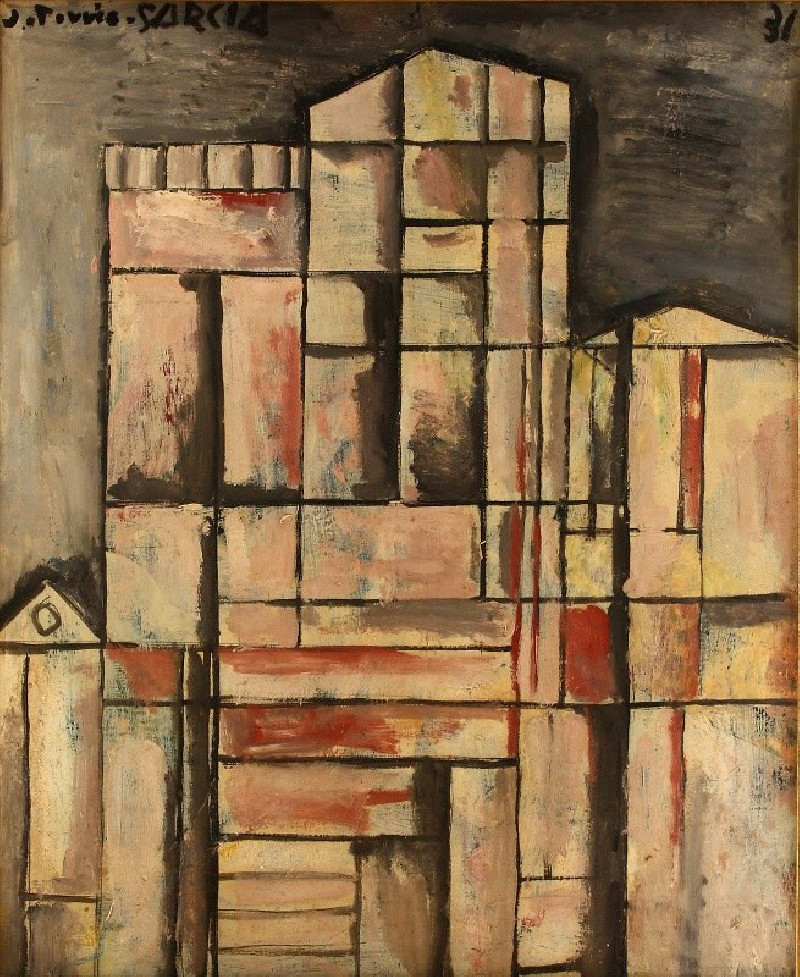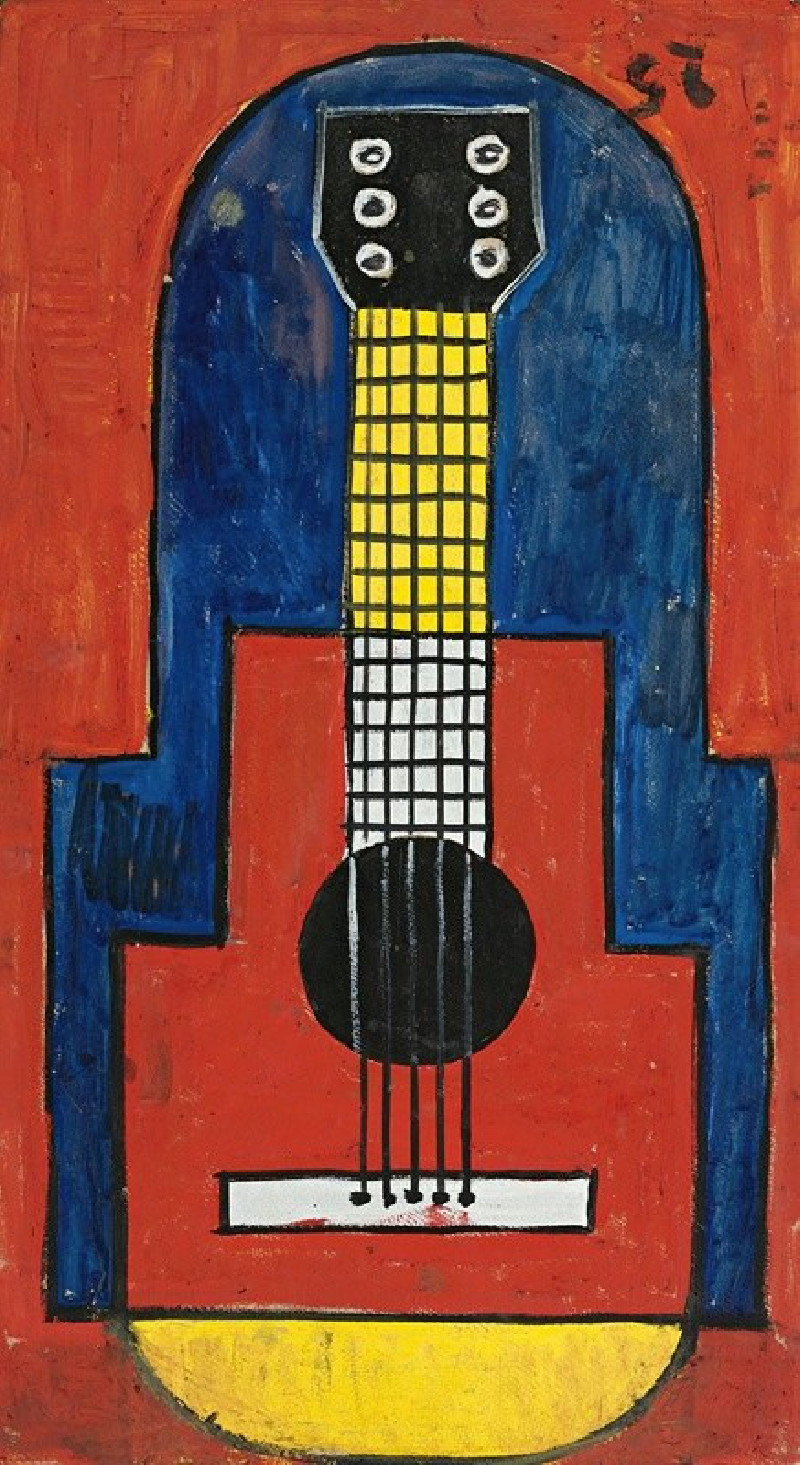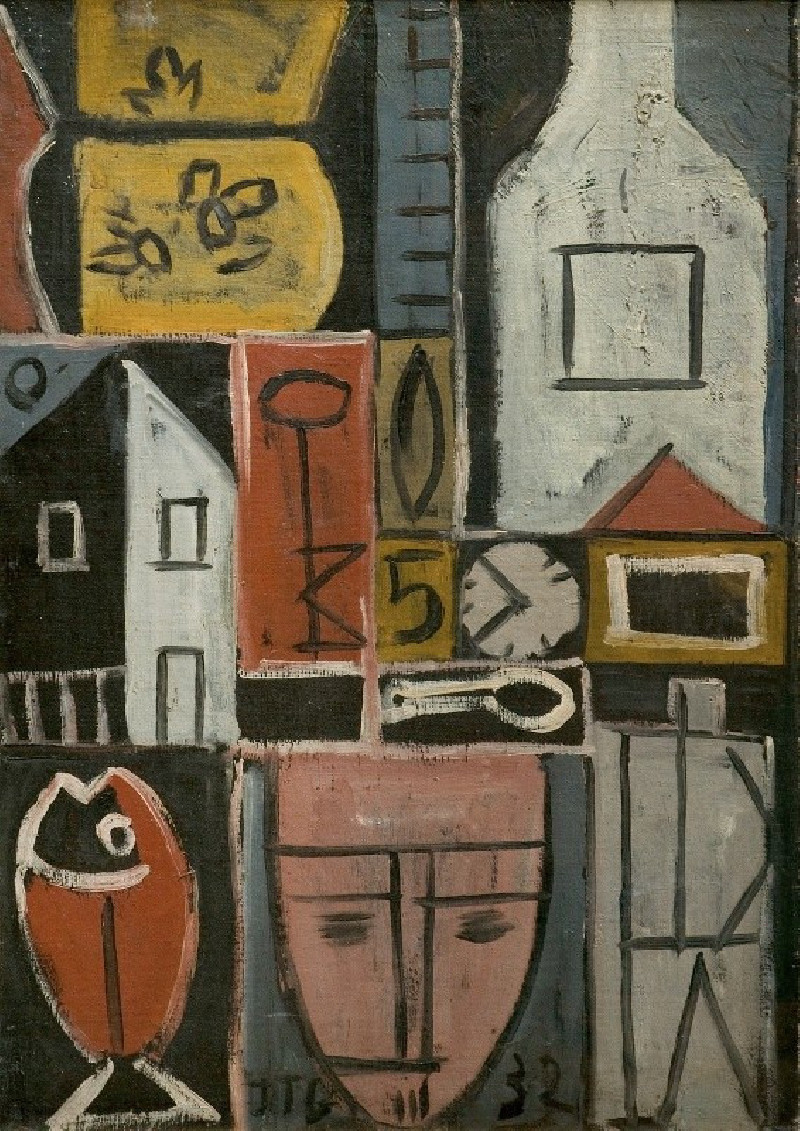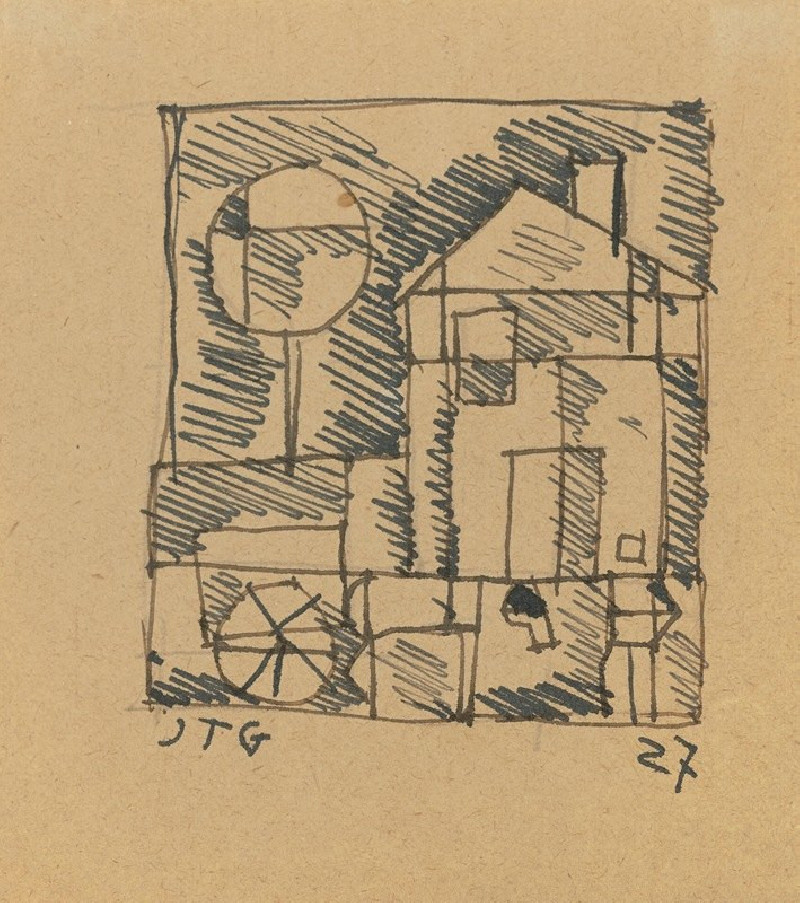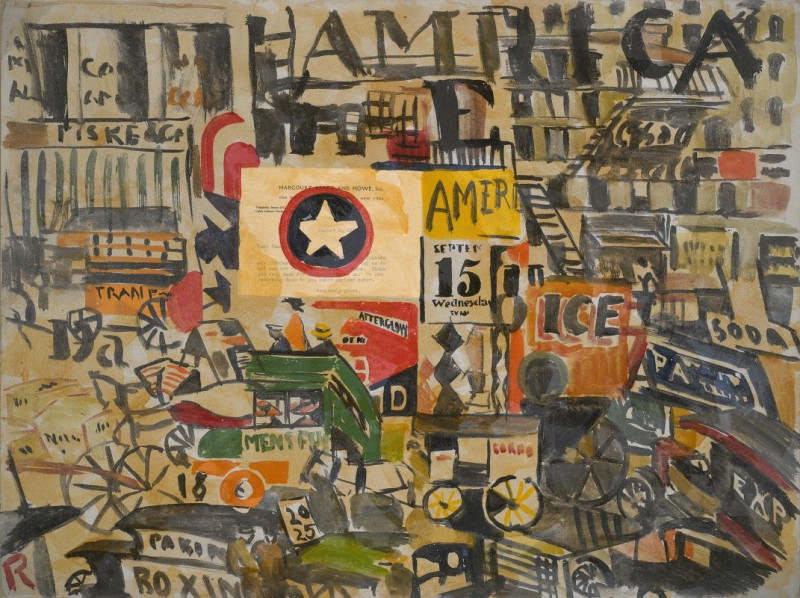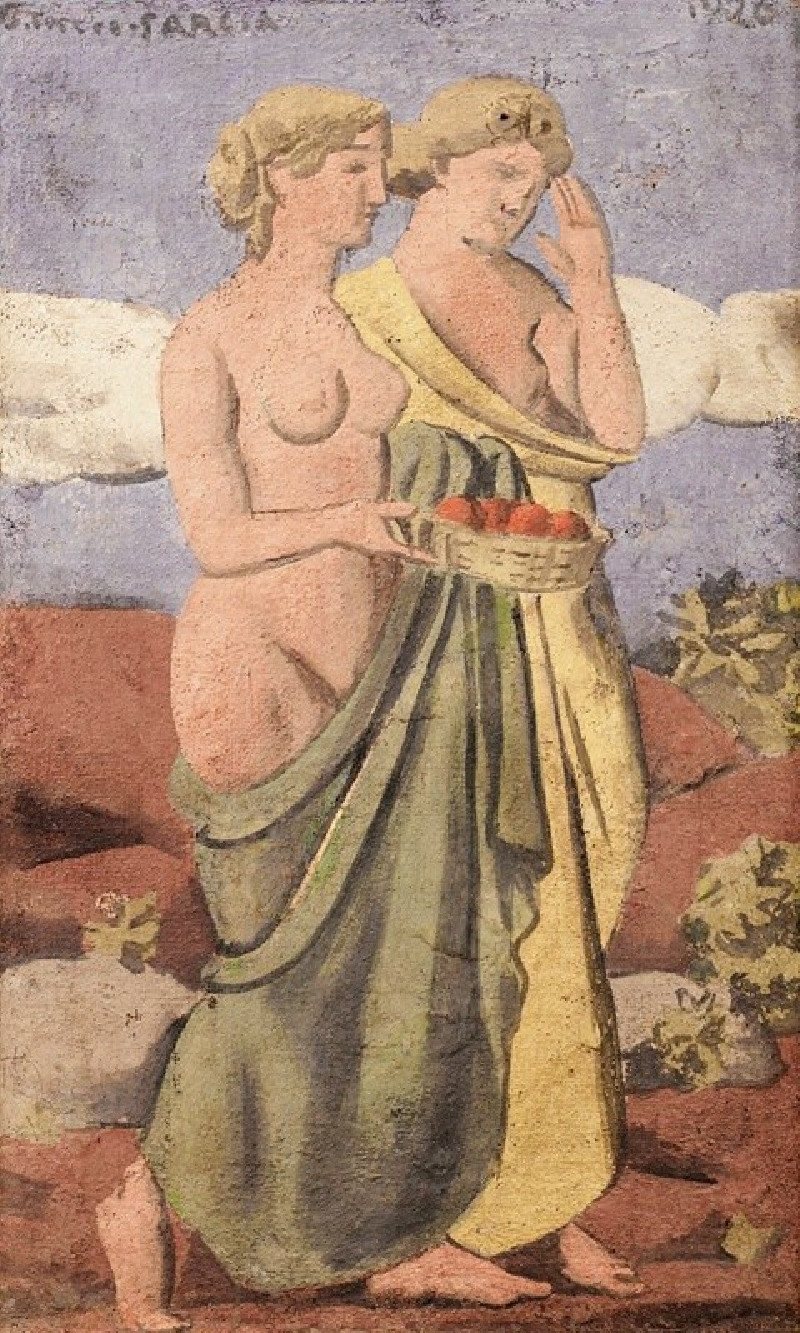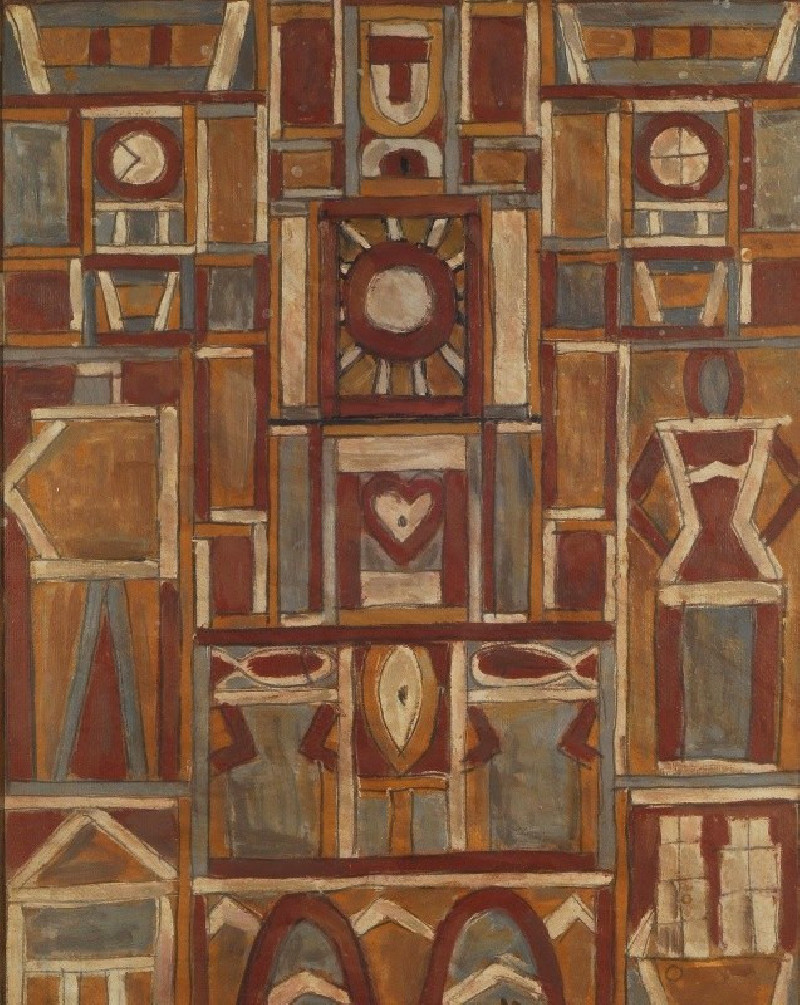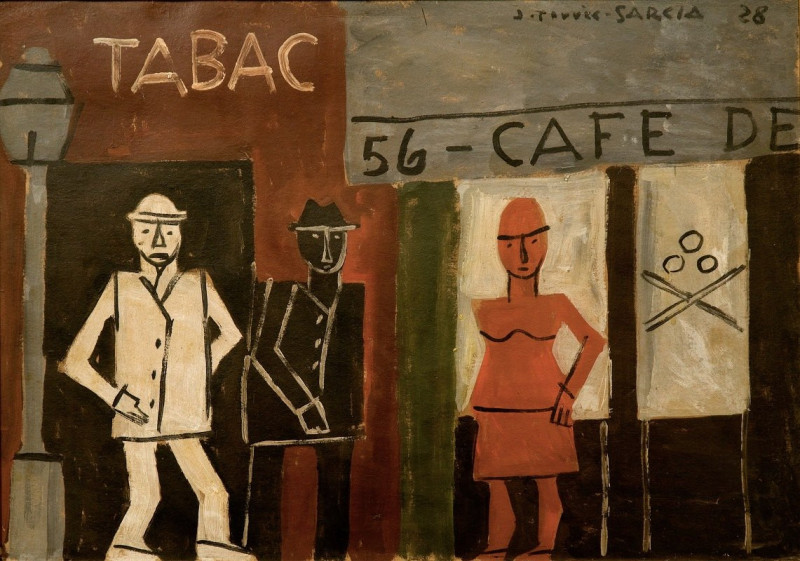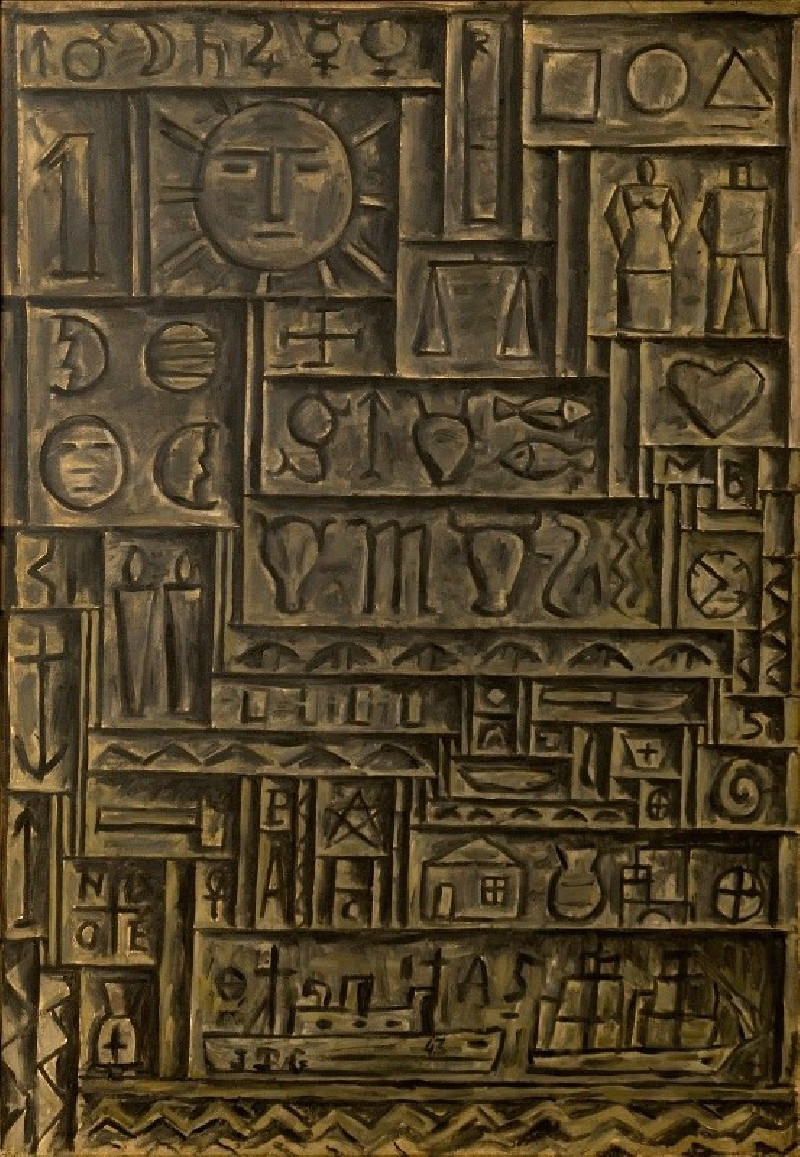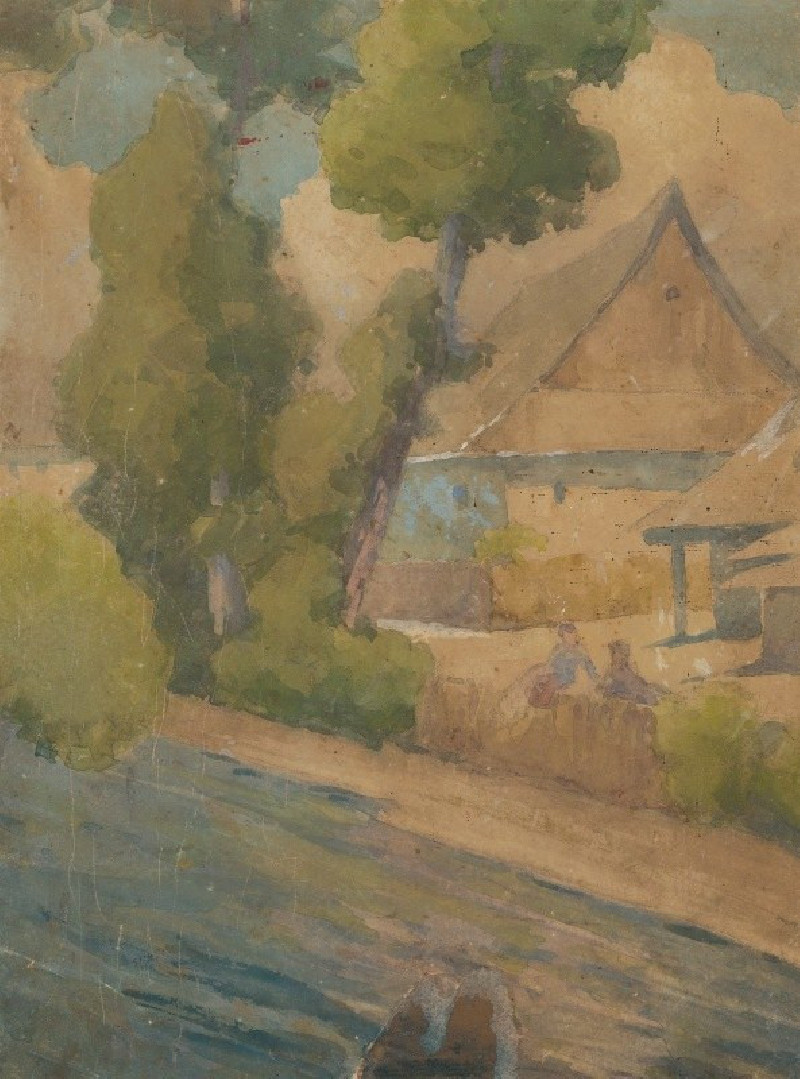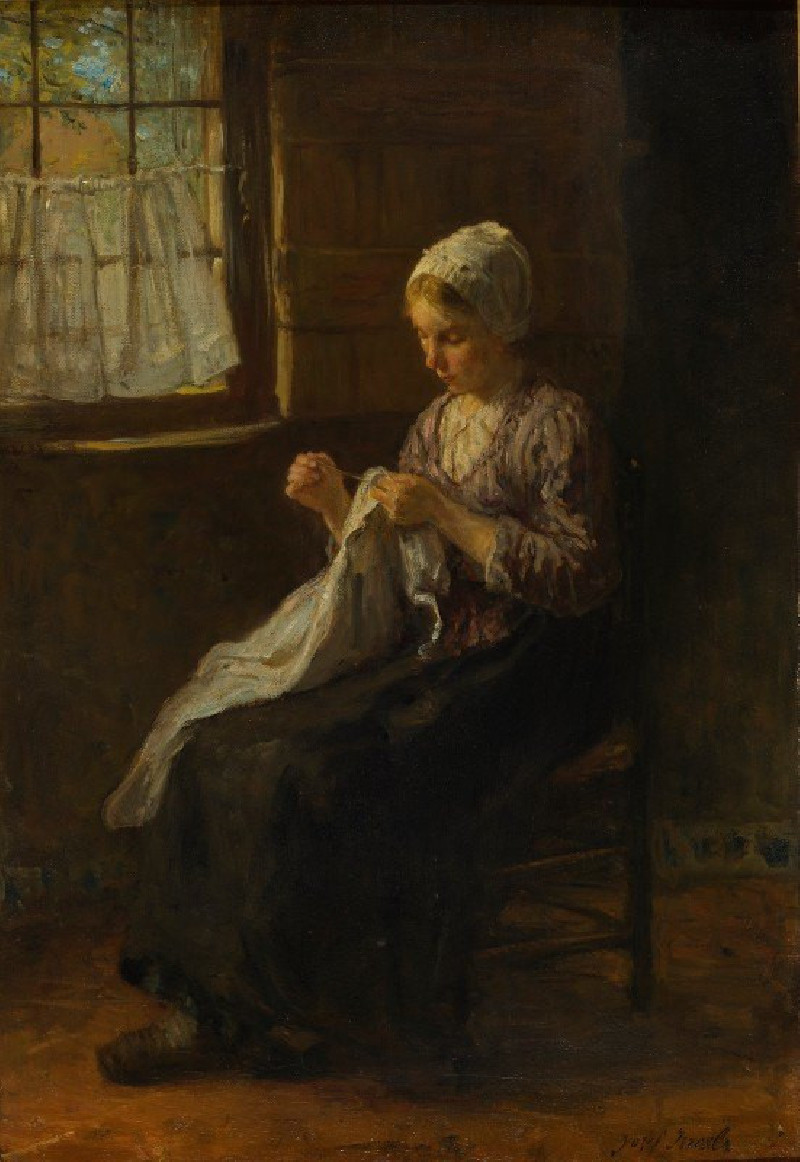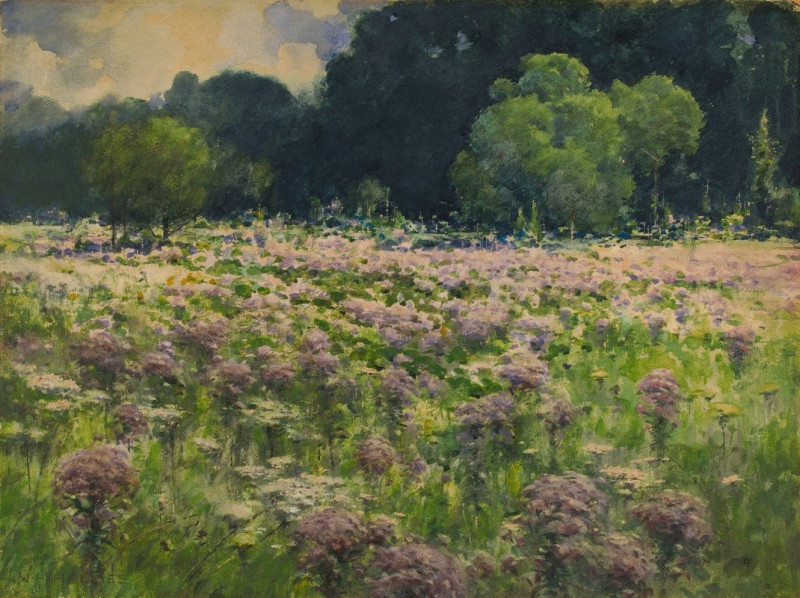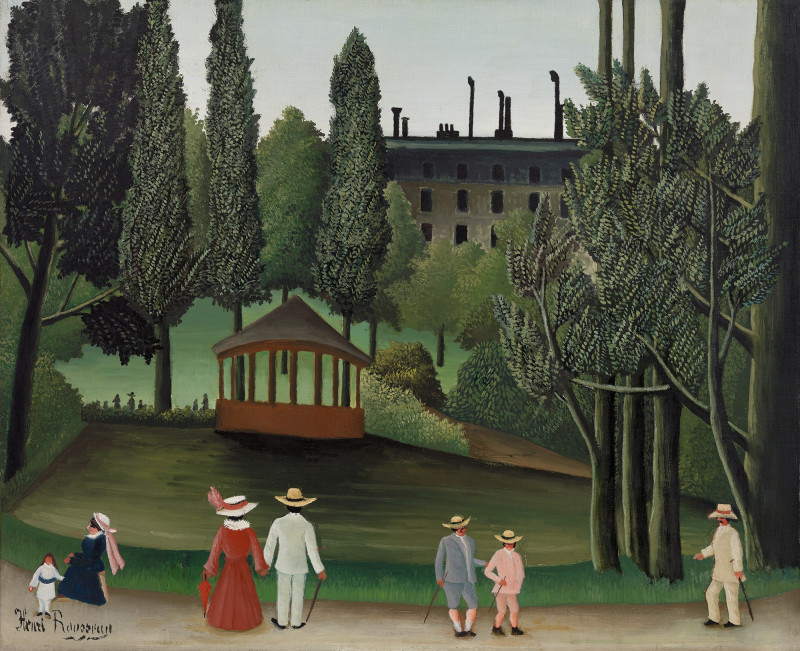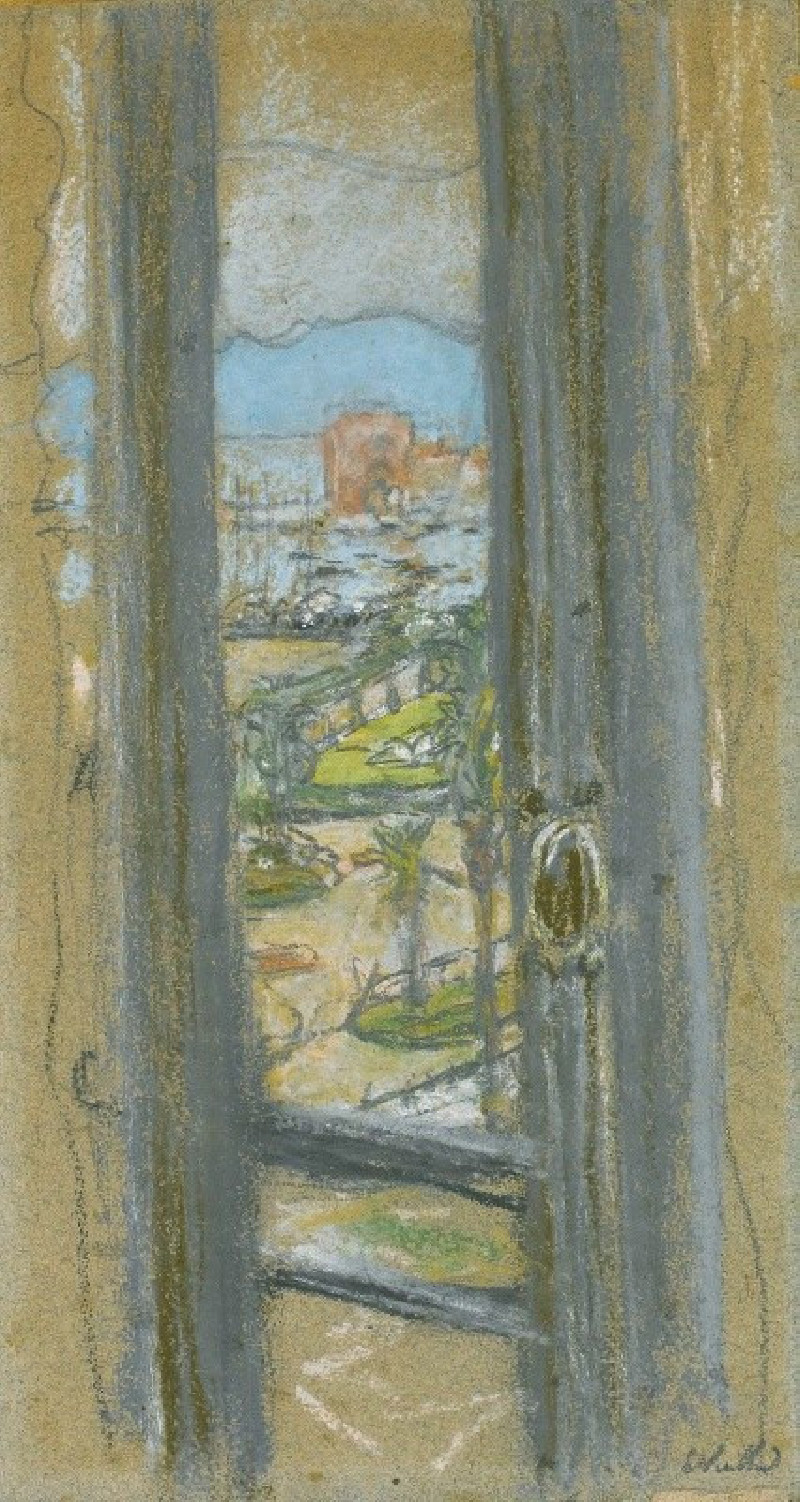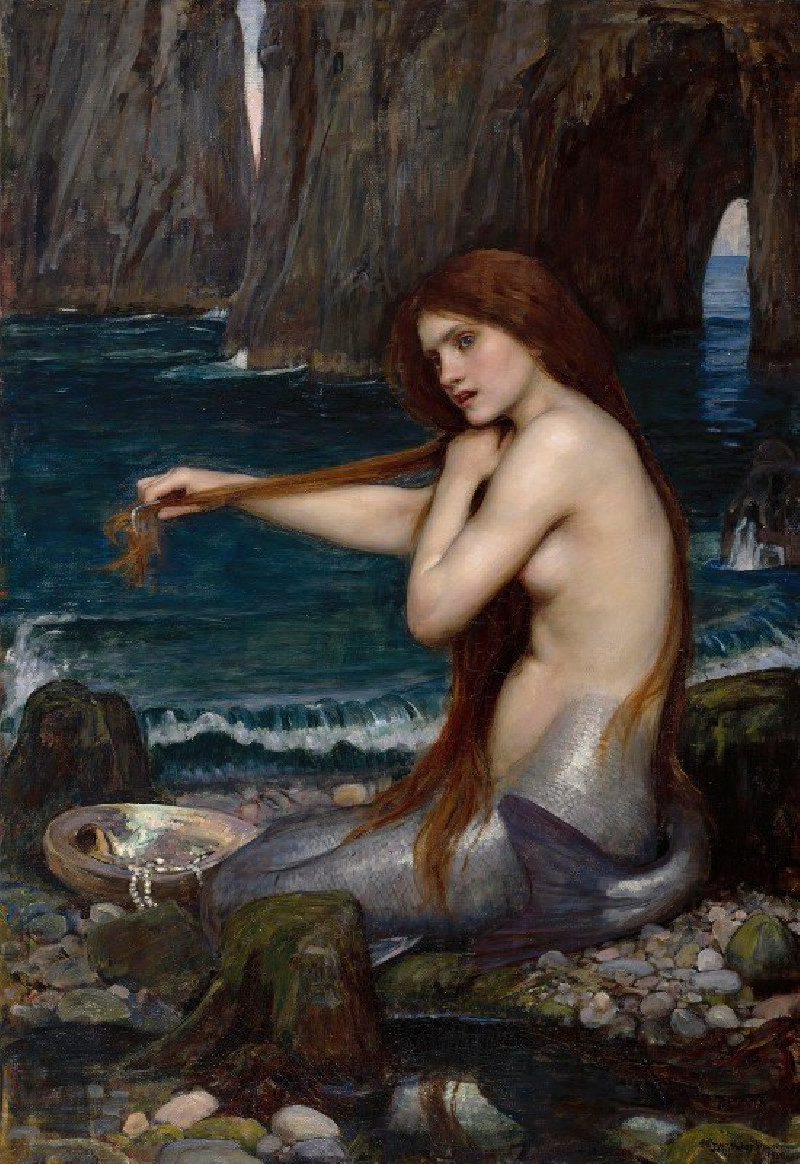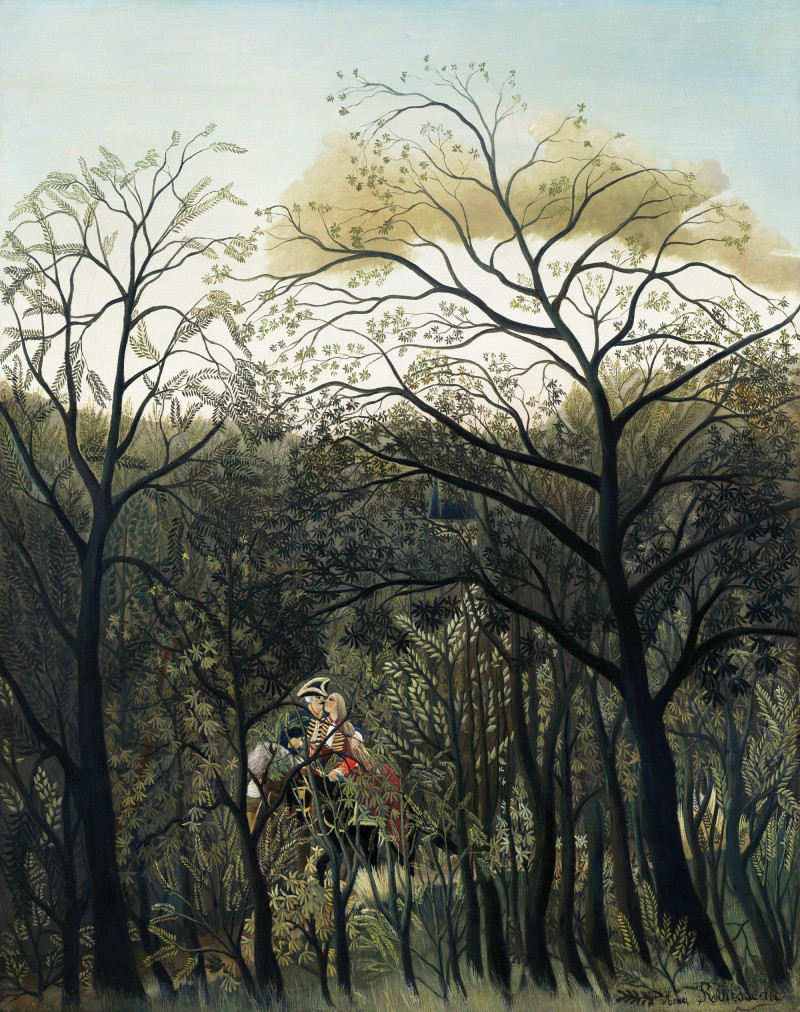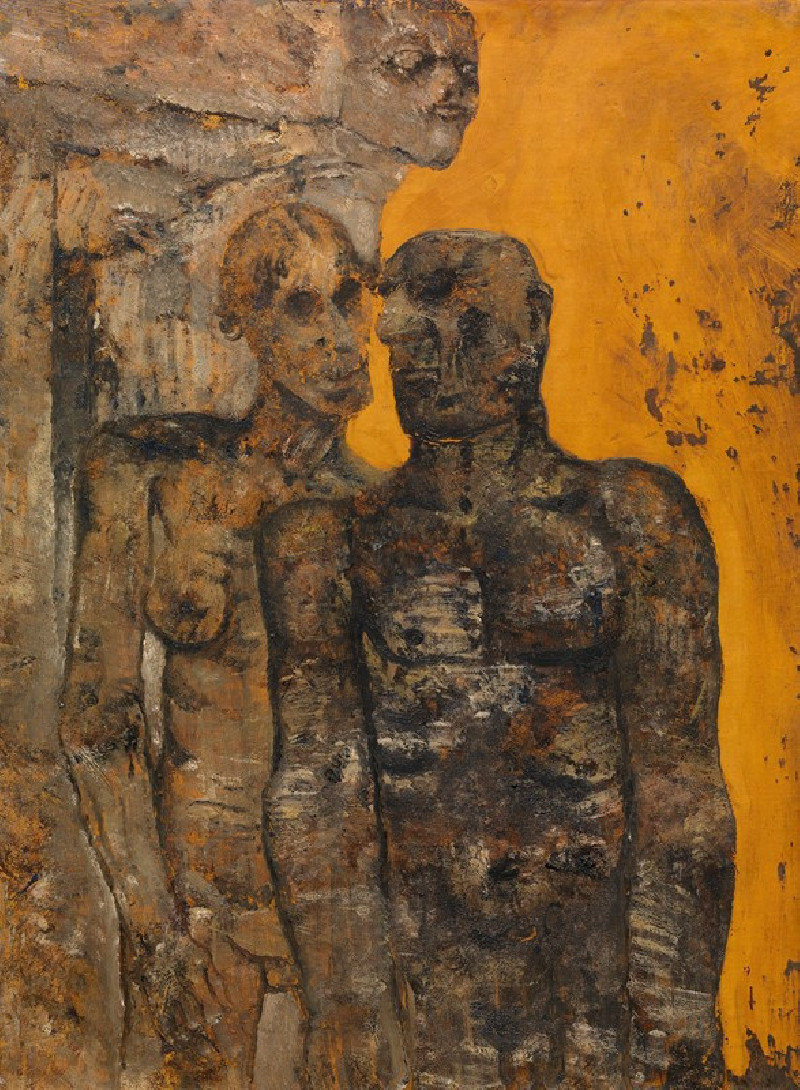Pintura constructiva (1929)
Technique: Giclée quality print
Recommended by our customers
More about this artwork
In this fascinating oil painting by Uruguayan modernist artist Joaquín Torres-García, viewers are invited into a structured world of geometric abstraction and symbolic complexity. Known for his influential role in the development of modern art in Latin America, Torres-García blends universal symbols with a grid-like cityscape in "Pintura constructiva."This artwork, painted in 1929, exhibits a rich tapestry of geometric forms and interlocking structures that evoke the fragmented rhythm of urban architecture. The palette is subdued yet impactful, utilizing earth tones interspersed with segments of bold primary colors, adding a vibrant contrast to the composition. Each element, though abstract, hints at familiar architectural features and everyday objects, suggesting a deeper connection between the mundane and the metaphysical.Torres-García masterfully employs symbols, such as ladders, windows, and basic architectural forms, to create a dialogue between the ancient and the modern world, a recurring theme in his work. This painting is not just a visual exploration but also an intellectual puzzle, urging the viewer to decipher its layered meanings and appreciate the harmony in its chaos."Pintura constructiva" represents a significant period in Torres-García's career when he formulated his theory of "Universal Constructivism," which proposed a blend of modern European painting techniques with pre-Columbian art forms. Through this piece, Torres-García challenges us to perceive art beyond the aesthetic and explore the underlying symmetries that connect different cultural and artistic expressions.Located in a prime position on our website, this painting invites art lovers and scholars alike to delve into the depths of Torres-García’s visionary mind.
Delivery
Returns
Joaquín Torres García was an Uruguayan/Spanish artist. He was born in Montevideo, Uruguay on July 28, 1874. As an adolescent he emigrated to Catalunya, Spain,where he initiated his career as an artist in 1891. For the next three decades, he embraced Catalan identity leading Barcelona’s and Europe's art and culture to its utmost vanguards. A ‘renaissance or universal man’; painter, sculptor, muralist, novelist, writer, teacher and theorist.

